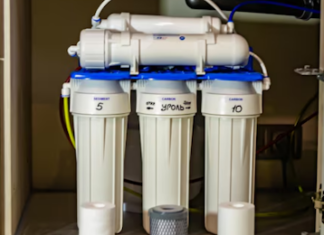Immunisation is one of the most effective, recommended and safest ways to protect children and adults from being infected by harmful communicable diseases. It also helps prevent community spread and keeps the surrounding people free from infection. Australia has one of the highest immunisation rates leading to the depletion of rubella, measles and diphtheria cases. The Australian government provides free vaccination to all vulnerable citizens, including children, pregnant women, older adults and others who have a higher risk of infection. 92.8% of the country’s population over 16 years have been double-vaccinated for COVID-19. State and other territory programs fund the distribution of vaccines stored in vaccine fridges, through workplaces or on private prescription.
Purchasing refrigerators with the right features goes a long way in ensuring the quality of the vaccines avoiding losses and accidents.
Type of Refrigerator Unit
Medical refrigeration is available as counter-top, under-the-top, pharmaceutical grade or compact units. While handling vaccines from a vaccine fridge, the clinical staff must always be accompanied by a physician. They must always store vaccines that follow the set guidelines from the Australian Centre for Disease Control. It prevents expensive losses and the distribution of compromised vaccines. The governmental agency recommends hospitals and distributors use independent, self-contained and secure vaccine fridges that have been exclusively designed to store vaccines.
Storing Techniques
In medical facilities, the staff must dedicate the refrigerator for only vaccine storage and biologics and no other vitals. Using a stand-alone fridge for frozen vaccines is the most efficient way. They must maintain a continuous electrical supply and maintain the necessary temperature range throughout the year. They must also buy a refrigerator in a size that is large enough to store a year’s supply of vaccines, especially during times of need, like COVID pandemic or flu season. Storing the vaccines in an organised manner ensures safety and easy access.
Refrigeration Temperature
Manufacturers, medical providers and distributors must store the vaccines correctly until administration. Additionally, they must store them at the right temperature to prevent loss of effectiveness. Vaccine fridges must reliably and consistently maintain the temperature within 2 to 8°C (36-46°F) or the recommended range to ensure the quality and integrity of the vaccines stored in them. They must remain inside secure, temperature-controlled storage space throughout production, transport and distribution to prevent them from becoming ineffective. Deep freezers must remain between -50° C and -15°C (-58° F – +5° F).
Handling the Vaccines
Medical professionals must not leave the vaccines on a countertop during administration or transfer. To prevent vaccine unit failure, they must place the vaccines in the assigned refrigerator spaces at all times and ensure that the refrigerators are not affected by power outages. Storing only the permitted number of vaccines helps prevent overcrowding and fluctuating the temperature inside the unit. They must also open it only when necessary as opening it too often can lead to the temperature rising inside. Medical professionals and facilities must contact the vaccine manufacturer and follow the health department protocol regarding storage. They must never freeze or refreeze refrigerated vaccines except for Rubella, Mumps and Measles vaccines.
Staff Training for Use and Maintenance
Every healthcare facility must have a vaccine coordinator to regularly check on the refrigeration unit temperature, working, vaccine cataloguing and other storage conditions of the vaccines. They must conduct routine checks every day and log the temperature readings. During those inspections, they must rotate the stocks such that the vaccines are used within time and do not expire. They must remove such expired and ineffective products from the storage to prevent them from being used on patients and optimise storage.









